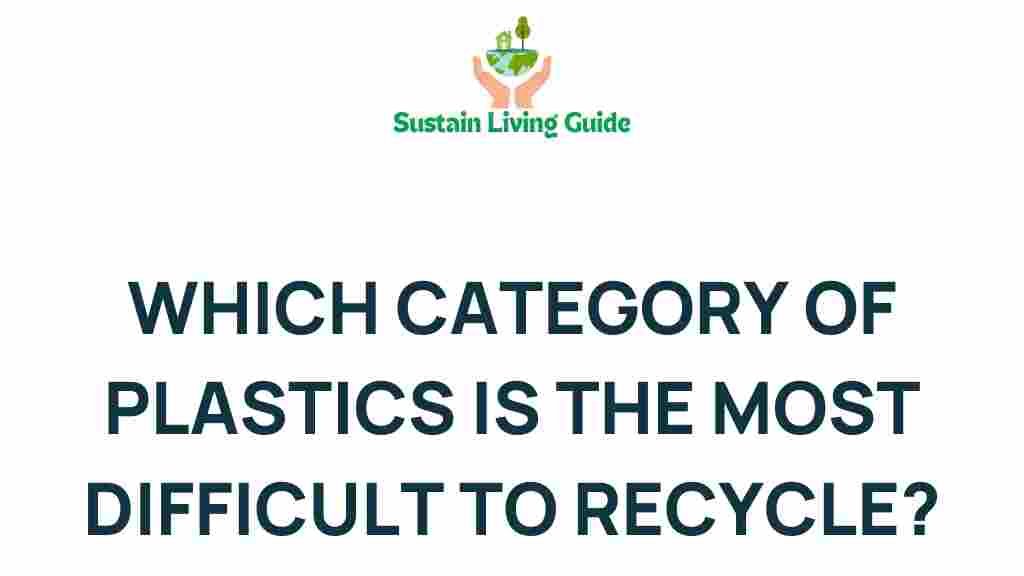Plastics: Understanding the Recycling Challenges
Plastics have become an integral part of our daily lives, found in everything from packaging to household items. However, the increasing use of plastics has led to a significant environmental crisis, particularly concerning their recyclability. Understanding which plastics are most challenging to recycle is crucial for consumers and industries alike. This article aims to unravel this mystery, providing insights into the types of plastics that pose recycling challenges and offering solutions for better waste management.
The Recycling Process of Plastics
Recycling plastics is not as straightforward as many might think. The recycling process involves several steps, each of which can be complicated by the type of plastic being processed. Here’s a breakdown of the typical recycling process:
- Collection: Plastics are collected from various sources, including households, businesses, and recycling centers.
- Sorting: Collected plastics are sorted by type and color. This step is crucial as different plastics have different recycling properties.
- Cleaning: The sorted plastics are thoroughly cleaned to remove any contaminants, such as food residues or labels, which can hinder the recycling process.
- Shredding: Cleaned plastics are then shredded into smaller pieces, making them easier to process.
- Melting: The shredded plastics are melted down and formed into pellets, which can then be used to create new products.
Despite this structured process, certain types of plastics present significant challenges at various stages, particularly during sorting and melting. Let’s explore which plastics are the most difficult to recycle.
Types of Plastics That Are Hard to Recycle
Not all plastics are created equal when it comes to recycling. Here are some of the most challenging types:
- Polyvinyl Chloride (PVC): Commonly used in plumbing pipes and some packaging, PVC is notoriously difficult to recycle due to the toxic additives it contains. The recycling process for PVC often leads to environmental concerns.
- Polycarbonate (PC): Found in items like water bottles and eyewear lenses, polycarbonate can be challenging to recycle because it often contains BPA (Bisphenol A), which poses health risks and complicates the recycling process.
- Polystyrene (PS): Often used in disposable cutlery and foam containers, polystyrene is lightweight and bulky, making it expensive to transport and recycle. Many facilities do not accept it.
- Mixed Plastics: Many products are made from a blend of different plastics, which makes them difficult to sort and recycle. Items like multilayered packaging often end up in landfills.
- Plastic Bags and Film: These items can get tangled in recycling machinery, leading to operational issues. Most curbside recycling programs do not accept them.
Why Are These Plastics Challenging to Recycle?
The challenges associated with recycling plastics stem from several factors:
- Contamination: Many plastics are contaminated with food or other materials, making them unsuitable for recycling.
- Complexity of Materials: Some products are made from multiple types of plastics, making sorting and processing difficult.
- Economic Viability: The cost to recycle certain plastics can outweigh the benefits, leading to fewer facilities willing to accept them.
- Lack of Infrastructure: In many areas, recycling facilities are not equipped to handle certain types of plastics, leading to increased landfill waste.
Step-by-Step Process for Recycling Common Plastics
While some plastics are more challenging to recycle, others have a more straightforward process. Here’s a step-by-step guide for recycling common plastics that are easier to process:
- Identify the Plastic Type: Check the resin identification code (the number inside the recycling triangle) on the item.
- Clean the Item: Rinse off any food residues or contaminants.
- Sort According to Local Guidelines: Follow your local recycling program’s guidelines for which plastics are accepted.
- Drop Off at Recycling Center: If your municipality does not accept certain plastics in curbside recycling, consider taking them to a specialized recycling facility.
Troubleshooting Tips for Recycling Plastics
Here are some troubleshooting tips to help you navigate the recycling of plastics more effectively:
- Stay Informed: Regularly check your local recycling guidelines, as they can change.
- Reduce Contamination: Ensure your plastics are clean and dry before recycling.
- Know Your Facilities: Research local recycling facilities to understand what plastics they accept.
- Explore Alternatives: Consider alternatives to certain plastics, such as using glass or metal containers.
Conclusion: The Path Forward for Plastics Recycling
In conclusion, while plastics are a ubiquitous part of modern life, not all are created equal when it comes to recycling. Understanding which plastics are most challenging to recycle can help consumers make informed choices and encourage industries to seek more sustainable alternatives. By focusing on reducing plastic use, improving recycling facilities, and supporting policies that promote responsible plastic production, we can work towards a more sustainable future.
For further insights on recycling and waste management, consider visiting this resource or checking out our related articles on sustainable living here.
This article is in the category Waste and created by SustainLivingGuide Team
